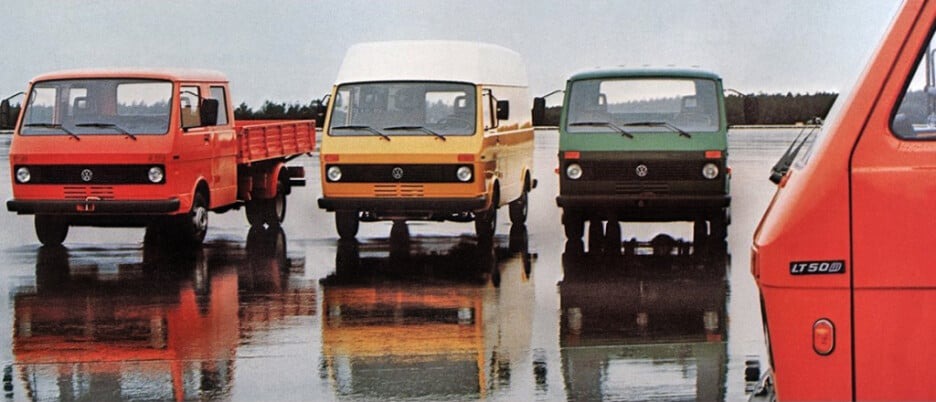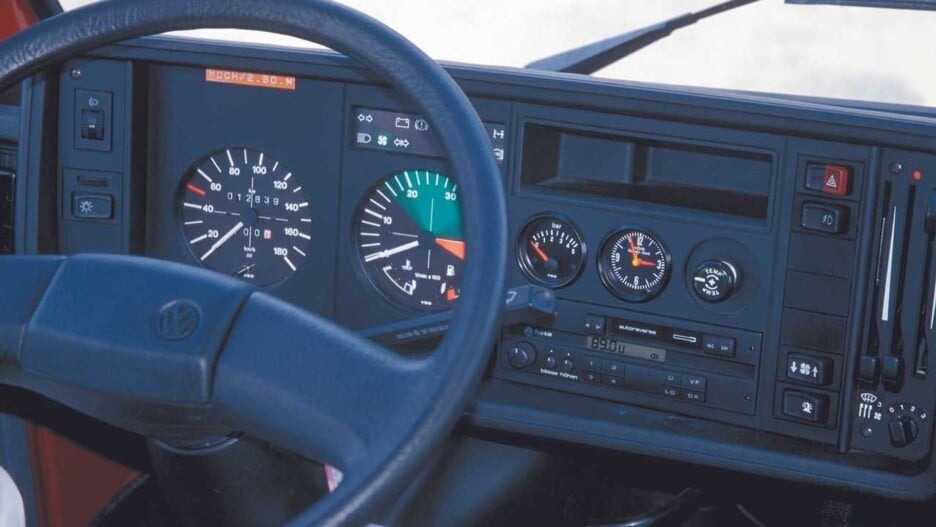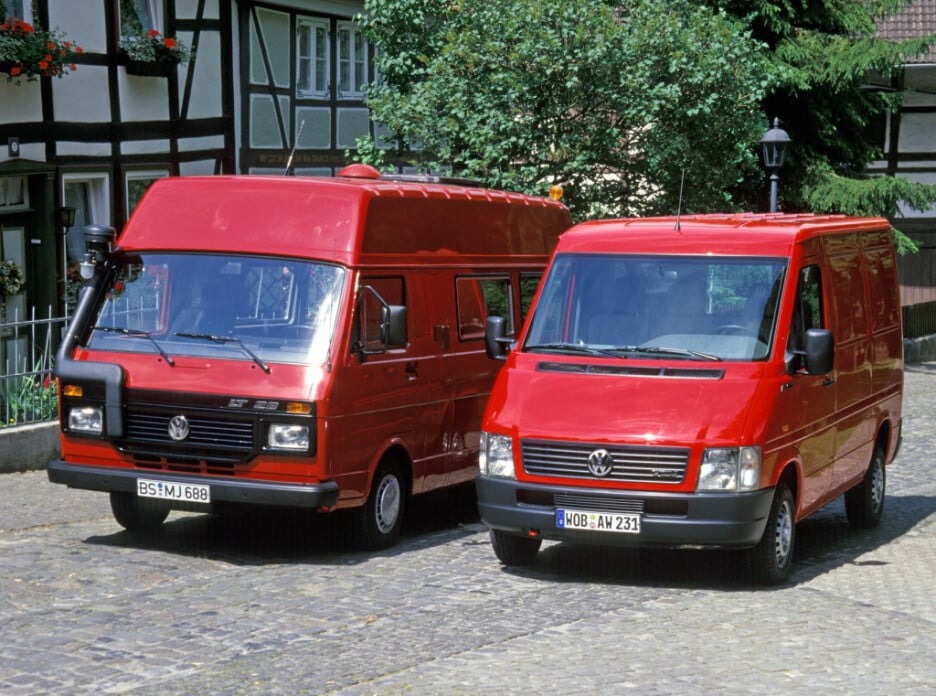Volkswagen and transport have been closely linked since the launch of the Bulli in 1950. Since the Bulli was not designed for larger loads, VW developed the LT model, which fit in the segment below the real trucks, but above the smaller transport models. Thus, the offer has been expanded with a more useful LKV vehicle in the segment between 2.8 and 3.5 tons.
The LT’s strong point was its very clean and square body that provided a lot of usable space. A lot of evolution before its current successor, the Crafter, was created.
Clean lines and flat surfaces – this has been a guiding principle for new Volkswagen models since the Passat in 1973. And not just for cars, but also for commercial vehicles. The best example is the first LT, introduced 50 years ago.
For the name, in perfect German style, a sober and functional approach was chosen. The name is derived from “Lasten-Transporter” (heavy transport) and simply the acronym “LT” was born. Marks 28, 31 and 35 indicate the total permitted weight, i.e. 2.8, 3.1 and 3.5 tons.
Much more spacious than the Bulli
As with the Transporter, Volkswagen also listened to customer wishes: two different wheelbases and two roof heights were available right from launch. It was called the “space genius” because it offered a whole range of useful versions such as panel van, minibus, flatbed truck, double cab and chassis cab.

During the development phase, it was decided that the ratio between the useful surface area and the occupied space on the road must be greater than that of the rear-engined Transporter. German engineers therefore designed a vehicle with a structure above the cabin, similar to the Transporter, but with the engine mounted in the front between the seats, above the front axle. The drive remained on the rear wheels.
Without the engine in the back, the entire cargo area was more usable. Nevertheless, the LT still remains compact. Compared to the T2 Bulli, it is only 34 cm longer and 30 cm wider. But thanks to the new space configuration, it offers 7.85 cubic meters of cargo volume, which is more than 50 percent more than its smaller brother.
Special attention paid to ergonomics
Volkswagen also pays attention to ergonomics, which until then were often neglected in “truck” vehicles. The cabin was designed in collaboration with industry experts: the controls are arranged close to the driver, with a large windshield and enlarged mirrors.

Superior ride comfort is ensured, among other things, by the independent front suspension, a rarity in the segment even years after the introduction of the LT. Initially, the vehicle was available with a 2.0-liter four-cylinder gasoline engine derived from the Audi 100 with power reduced to 75 hp for commercial use or with a 2.7-liter diesel engine from the British manufacturer Perkins with 65 “horses”.
In 1979, Volkswagen replaced it with its first six-cylinder diesel engine. The new 2.4-liter engine offered only eight horsepower more, but much more torque and outstanding smoothness by the standards of the time, so much so that Volvo also adopted it in its first six-cylinder models.
Thanks to its quality, reliability and high load capacity despite its compact dimensions, the LT soon became a very popular base for campers. So it’s no surprise that in 1988, alongside the compact California, based on the third-generation Bulli (T3), Volkswagen introduced an LT-based camper – the Florida – a true four-person camper with a bathroom.
Second generation and introduction to Crafter
After 21 years and more than 470,000 units produced, in 1996 it was time for a successor. As with the transition from T3 to T4, the transition from LT1 to LT2 also marked the beginning of a new era. The LT2 was actually a completely new vehicle introduced by the newly founded brand Volkswagen Commercial Vehicles (VWN), founded in 1995 and headquartered in Hanover.

Development, as for the next series, is taking place in cooperation with Mercedes. The LT thus becomes the “twin” of the new Sprinter. The diesel engines are now mounted longitudinally under the short front hood. Access to the cargo area or passenger compartment is easier, as it can be passed between the front seats.
Volkswagen’s philosophy of offering a wide range of body styles is also maintained for the LT2: van, van, bus, box body, double cab and chassis, with three wheelbase variants and a total weight of between 2.6 and 4.6 tonnes. The TDI engines are a strong asset: efficient, powerful and reliable, they are also the first choice for customers on the LT2.
In 2002, Volkswagen Commercial Vehicles introduced the LT2 with a new 2.8-liter four-cylinder diesel engine, with 158 hp and 331 Nm of torque, which were top values in the segment. Production at the Stöcken plant ended in 2006 after nearly 340,000 units had been produced.
Based on the same concept as its predecessor, the successor Crafter debuted in 2006, initially closely related to the Mercedes Sprinter.